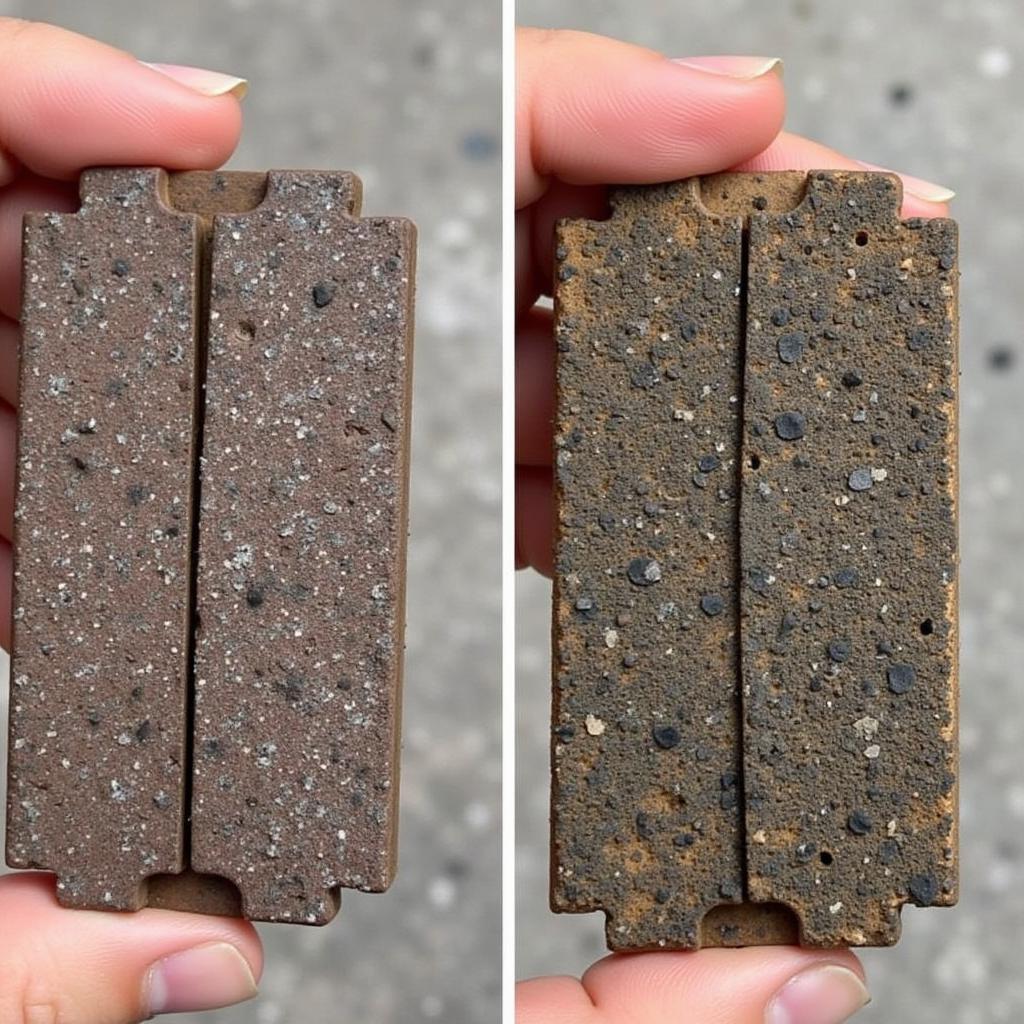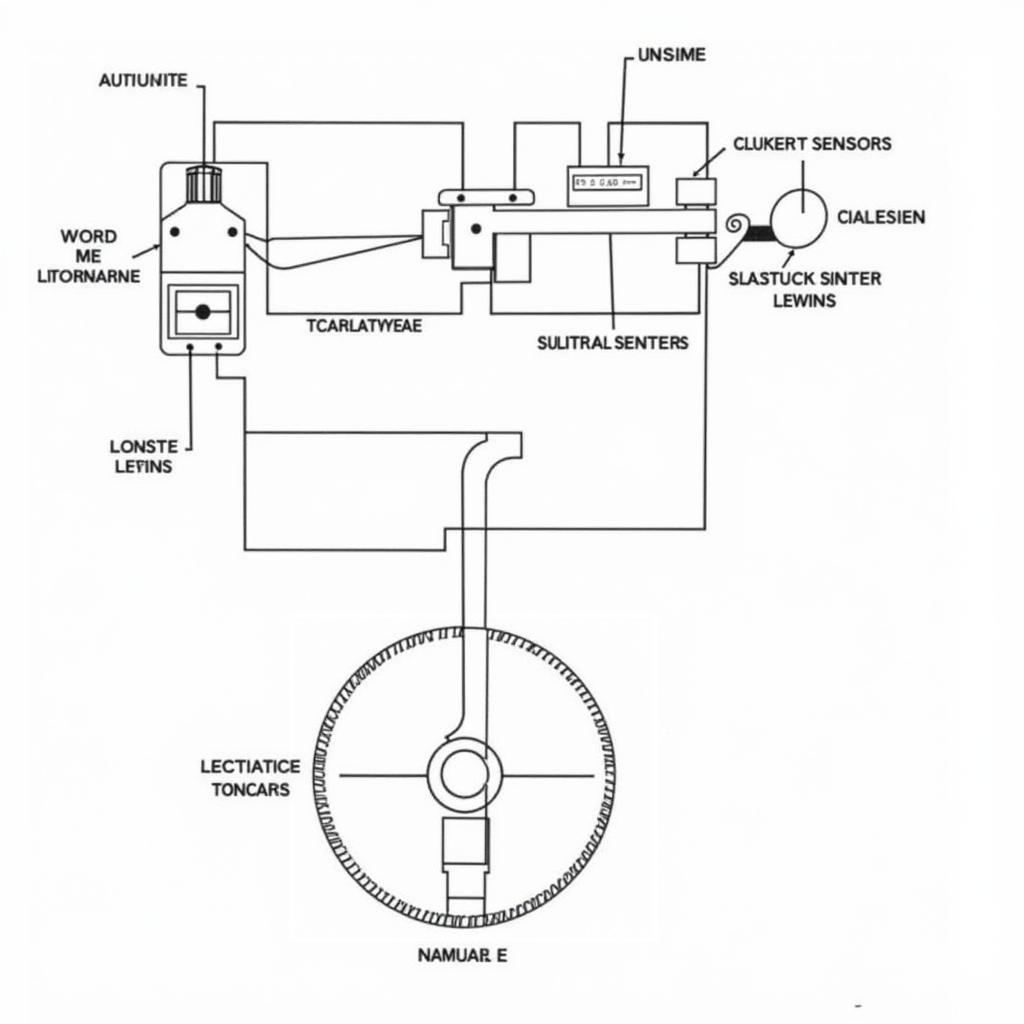The brake warning light on your dashboard is a crucial safety feature in your 2005 Hyundai Santa Fe. When illuminated, it signals a potential issue with your braking system that requires immediate attention. Ignoring this warning could lead to brake failure, jeopardizing your safety and that of others on the road. This article aims to guide you through the common causes of a 2005 Hyundai Santa Fe brake warning light and provide potential solutions.
Understanding Your Santa Fe’s Brake System
Before diving into troubleshooting, it’s helpful to understand the basics of your Santa Fe’s braking system. It’s comprised of several key components, including:
- Brake Pedal: This is where you, the driver, initiate the braking action.
- Brake Booster: This component amplifies the force you apply to the brake pedal, making braking easier.
- Master Cylinder: The master cylinder converts your pedal pressure into hydraulic pressure.
- Brake Lines: These lines carry the hydraulic pressure to the brakes at each wheel.
- Brake Calipers and Wheel Cylinders: These components house the brake pads (for disc brakes) or shoes (for drum brakes) and push them against the brake rotor or drum to slow or stop the vehicle.
Common Causes of a 2005 Hyundai Santa Fe Brake Warning Light
There are several reasons why your 2005 Hyundai Santa Fe’s brake warning light might be on. Here are some of the most common culprits:
1. Low Brake Fluid Level
Why it matters: Brake fluid is the lifeblood of your braking system, transmitting the hydraulic pressure needed to stop your vehicle. A low brake fluid level often indicates a leak, which can lead to reduced braking performance or even brake failure.
Troubleshooting:
- Check the brake fluid level: Locate the brake fluid reservoir under the hood. It’s usually a translucent plastic container with a “MIN” and “MAX” marking. Ensure the fluid level is within this range.
- Inspect for leaks: Look for any signs of fluid leaking around the master cylinder, brake lines, and near the wheels.
Solution: If the brake fluid level is low, carefully top it off with the correct DOT 3 or DOT 4 brake fluid specified in your owner’s manual. However, if you notice a leak, it’s crucial to have your Santa Fe towed to a mechanic immediately for professional repair.
2. Worn Brake Pads
Why it matters: Brake pads are designed to wear down over time as they create friction against the brake rotor to stop your vehicle. Thin brake pads can lead to reduced braking performance and potential damage to other brake components.
Troubleshooting:
- Listen for noises: Worn brake pads often produce a high-pitched squealing or grinding sound when you apply the brakes.
- Feel for vibrations: You might feel vibrations in the brake pedal or steering wheel if your brake pads are excessively worn.
Solution: If you suspect worn brake pads, it’s best to have them inspected and replaced by a qualified mechanic.
 Worn Brake Pads
Worn Brake Pads
3. Faulty Brake Light Switch
Why it matters: The brake light switch is responsible for activating your brake lights when you press the pedal. A malfunctioning switch can prevent your brake lights from illuminating, increasing the risk of a rear-end collision.
Troubleshooting:
- Check your brake lights: Have someone press the brake pedal while you observe the rear of the vehicle to ensure both brake lights are working.
Solution: If your brake lights aren’t working correctly, the brake light switch is likely the culprit. While it’s a relatively easy fix, it’s best to consult a mechanic for proper diagnosis and replacement.
4. ABS (Anti-lock Braking System) Issue
Why it matters: The ABS prevents your wheels from locking up during hard braking, helping you maintain steering control. A problem with the ABS module, wheel speed sensors, or related wiring can trigger the brake warning light.
Troubleshooting:
- Look for additional warning lights: The ABS warning light might illuminate alongside the brake warning light.
- Note any unusual braking behavior: You might experience a pulsating brake pedal or difficulty stopping if there’s an ABS issue.
Solution: Diagnosing and repairing ABS problems often require specialized equipment and expertise. It’s crucial to consult a qualified mechanic or dealership for assistance.
 ABS Warning Light
ABS Warning Light
What to Do When Your Brake Warning Light Turns On
- Don’t panic: Remain calm and pull over to a safe location as soon as possible.
- Assess the situation: Determine if there are any unusual noises, vibrations, or smells coming from your brakes.
- Check the brake fluid level: If it’s safe to do so, check the brake fluid level.
- Call for assistance: If the brake fluid level is extremely low, you notice leaks, or suspect a serious problem, do not attempt to drive your vehicle. Contact a qualified mechanic or towing service for assistance.
Maintaining Your Hyundai Santa Fe’s Brakes
Prevention is key to avoiding brake system issues. Here are some maintenance tips to keep your Santa Fe’s brakes in top condition:
- Regular inspections: Have your brakes inspected at least once a year, or more frequently if you drive in harsh conditions.
- Brake fluid flushes: It’s generally recommended to flush your brake fluid every 2-3 years or as specified in your owner’s manual.
- Timely brake pad replacement: Don’t wait until your brake pads are completely worn down. Replace them as soon as you notice signs of wear or as recommended by your mechanic.
Conclusion
A glowing brake warning light in your 2005 Hyundai Santa Fe is a serious matter that shouldn’t be ignored. By understanding the common causes and taking prompt action, you can help ensure the safety and reliability of your vehicle’s braking system. Remember, regular maintenance and prompt attention to warning signs are crucial for safe and worry-free driving.

